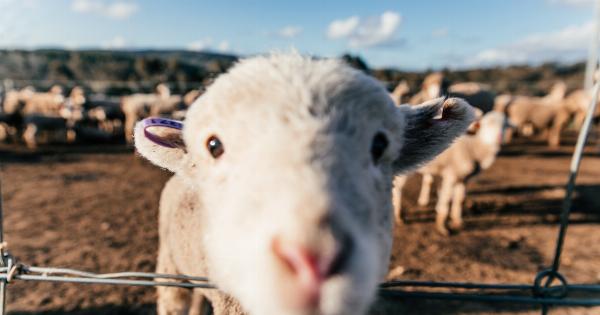Barley is one of the oldest known cereal grains and has been cultivated for over 10,000 years. It has played a crucial role in human civilization, being used as food, animal feed, and even alcoholic beverages.
But, have you ever heard of barley eyes? Barley eyes are small circular spots on the barley grain, and they hold a fascinating story of agriculture and innovation.
What are Barley Eyes?
When we think of barley, we picture a smooth and shiny grain. However, if you closely examine a barley grain, you will notice small circular spots, which are called eyes.
They are located at opposite poles of the barley grain and are the remnants of the embryo, the part of the grain that grows into the barley plant.
The size and number of eyes can vary depending on the barley variety, environmental conditions, and growth stages. Typically, barley grains have two eyes, one on the crown and one on the base.
In contrast, six-row barley varieties, which have more spikes per head than two-row varieties, can have more eyes per grain.
The History of Barley Eyes
Agriculture has been one of the most significant human innovations, with the origins dating back to around 11,000 years ago in the Fertile Crescent, modern-day Iraq and Syria.
Barley was one of the first crops to be cultivated, and the cultivation of barley led to the rise of settled agricultural societies.
Barley has been widely used for food, animal feed, and brewing beer. However, it was not until the 20th century that the eyes on barley grains were noticed and understood.
The discovery of barley eyes was of great significance as it allowed breeders to develop barley varieties that were more resistant to certain diseases, had better yields, and were of better quality.
The first studies on barley eyes were conducted by the Danish researcher, H.N. Johannson, in the early 1900s. He studied the inheritance of the trait and found that it followed a simple Mendelian pattern. In 1929, the American geneticist, O. F.
Cook, confirmed Johannson’s findings and named the locus controlling the trait ‘Vrs1’.
Further studies found that the Vrs1 gene controls the development of lateral shoots in the barley spikes.
Barley grains that carry two recessive vrs1 alleles do not develop lateral shoots and, therefore, have only two eyes, while grains that carry at least one dominant Vrs1 allele develop more lateral shoots, resulting in more eyes.
Why are Barley Eyes Important?
Barley eyes are not merely a cosmetic feature of the grain; they have important breeding and agricultural implications. The number and size of the eyes can affect the quality and yield of barley grains.
The presence of many eyes in the grain can affect the milling and malting process and affect the germination rate, which is crucial for brewing and distilling.
Therefore, breeders try to develop barley varieties with a balance of the number and size of eyes, which improve the yield, quality, and processing of barley.
Moreover, barley eyes can also indicate susceptibility to certain diseases, such as scald, spot form of net blotch, and barley yellow dwarf virus.
Breeders can use the knowledge of the genetics of barley eyes to develop strains that are resistant to these diseases.
The Future of Barley Eyes
Barley is an essential crop, not only for food and feed but also for the brewing and distilling industry. The demand for barley is increasing globally, with the world production of barley estimated at 153 million tons in 2021.
Therefore, the understanding of the genetics and breeding of barley eyes is becoming crucial for achieving sustainable and efficient barley production.
Barley breeders aim to develop varieties that have high-yield potential, disease resistance, and good grain quality.
The knowledge of the genetics of barley eyes can also contribute to the genome editing of barley to develop new strains with desirable traits.
Genome editing of crops has been hailed as a promising tool for improving crop traits, such as yield, quality, and disease resistance.
Conclusion
The discovery of barley eyes has opened a new vista in the genetics and breeding of barley.
The understanding of the inheritance of the trait and the function of the Vrs1 gene has allowed breeders to develop barley varieties that are more resistant to diseases, have better yields, and are of better quality.
The importance of barley eyes in the agriculture, food, and brewing industries cannot be overstated.
The demand for high-quality barley is increasing, and the genetics and breeding of barley eyes are becoming more critical for achieving sustainable and efficient barley production.































